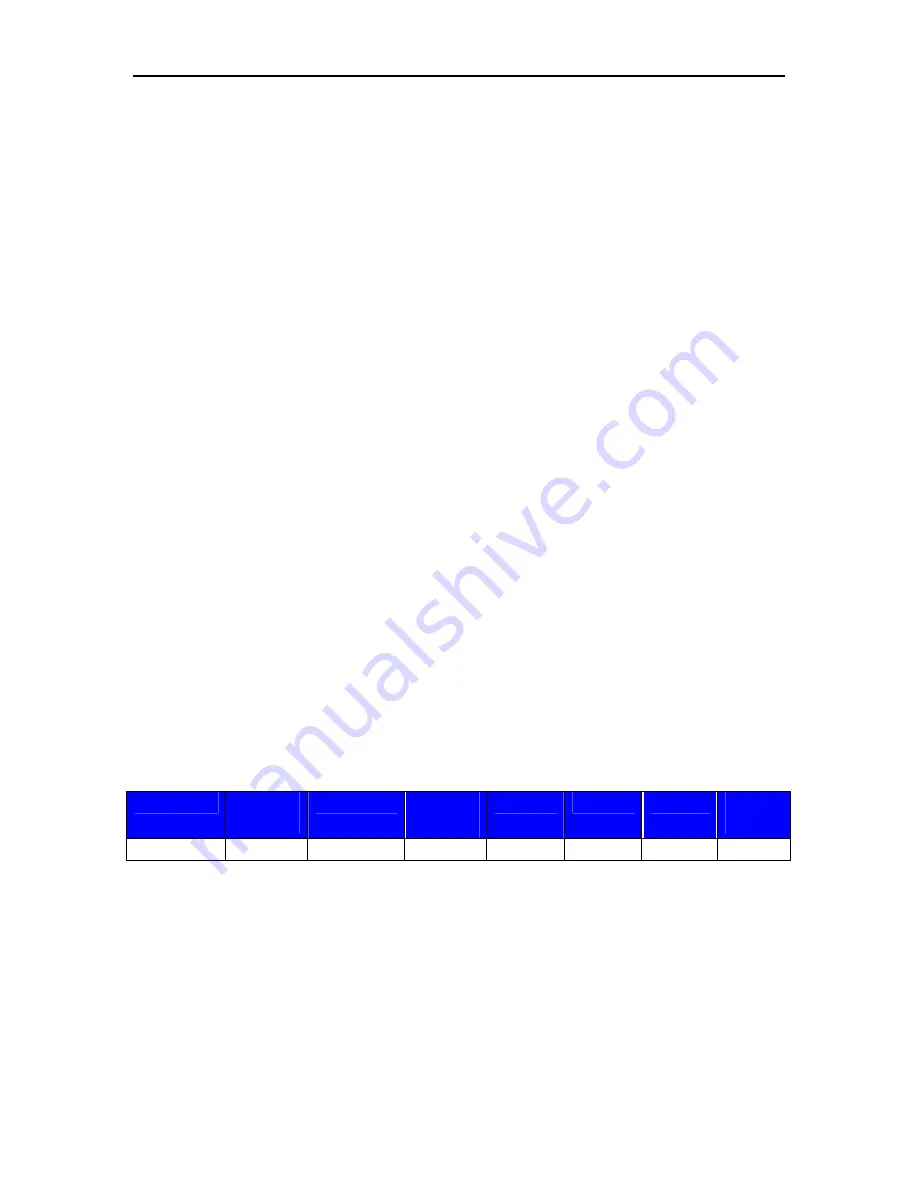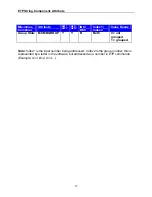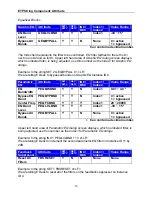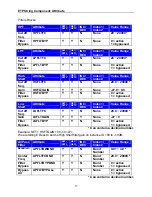
Overview
2
E Desk can be controlled via the control dialogs in the E Desk software, or via
third-party controllers using RS-232 or Telnet.
For control of E Desk, Whirlwind created ETP (E Desk Text Protocol). This
simply means that E Desk will accept strings of ASCII characters to control and
read settings of gain, mute, logic state, frequency, audio levels, and other
parameters of DSP Blocks in E Desk products.
ETP strings can be sent via third-party controllers using RS-232 (see page 4) or
Telnet via TCP/IP (see page 5). A line feed needs to be sent after each
command string sent.
The ETP string is structured in the following order:
Command
DeviceNumber
Attribute
InstanceIDNumber
Index1
Index2 Value
<LF>
ETP strings require a space between each parameter; the last character in the
string needs to be a line feed <LF>.
For each control string a few components will need to be derived from the E
Desk software:
Device Number
,
InstanceIDNumber
, and
Index
.
Command
and
Attribute
are derived from this document. In a SET command,
Value
is used to
specify what the DSP block attribute is to be set to. In an increment or
decrement (INC or DEC) command
Value
is used to specify how much the DSP
block attribute is to be changed by.
**Note**
E Desk software will assign an Instance ID to each DSP block on the
initial compile of the system. Subsequent compiles will not change the Instance
IDs unless the “Reassign Instance IDs” check box is selected in the ‘Compile’ tab
of the ‘Options’ screen (located on the Tools pull-down menu) in the E Desk
software.
Example: A string to control a fader might look like this:
SET 1 FDRLVL 2 1 9 <LF>.
The individual components for this string are:
Command Device
Number
Attribute
Instance
ID
Number
Index1
Index2
Value
Line
feed
SET
1
FDRLVL
2
1
9
<LF>
Notice that Index2 is not used since there is nothing entered in this parameter.





































